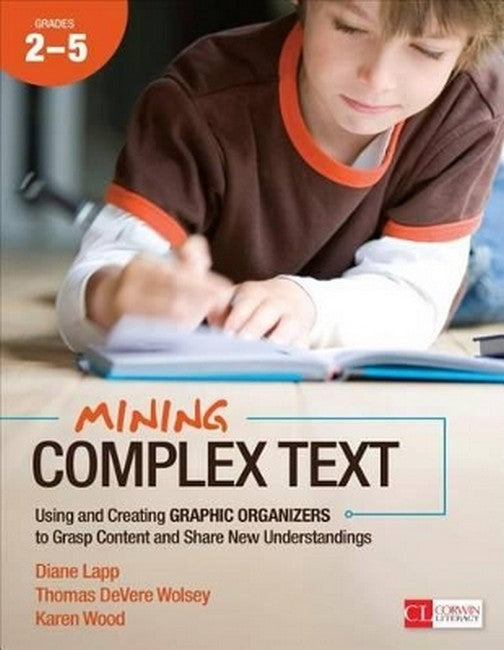Diane Lapp, EdD, is a distinguished professor of education at San Diego State University where her work continues to be applied to schools. She is also an instructional coach and teacher at Health Sciences High & Middle College. Throughout her career, Diane has taught in elementary, middle, and high schools. Her major areas of research and instruction regard issues related to the planning and assessment of very intentional literacy instruction and learning. A member of both the California and the International Reading Halls of Fame, Diane has authored, coauthored, and edited numerous articles, columns, texts, handbooks and children's materials on instruction, assessment, and literacy related issues. Diane is the recipient of the ILA 2023 William S. Gray Citation of Merit, a prestigious award reserved for those who have made outstanding contributions to multiple facets of literacy development. Diane can be reached at lapp@sdsu.edu. Follow her on twitter @lappsdsu As a teacher for online courses hosted by the University of Central Florida, Dr. Thomas DeVere Wolsey is interested in how the interactions of students in digital and face-to-face environments change their learning. While much of his research centers on how visual information, such as graphic organizers, works in tandem with text to improve learning, he is also intrigued by the intersections of traditional literacies with digital literacies, specifically focusing on how those literacies affect teacher preparation and professional development. Dr. Karen Wood has been training literacy specialists for over 25 years at the University of North Carolina at Charlotte, where she is a Professor in the Department of Reading and Elementary Education. Dr. Wood is a published author and former reading teacher, reading specialist, and K-12 instructional coordinator, and much of her writing focuses on translating research and theory into classroom practice across all subjects and grade levels.
Request Academic Copy
Please copy the ISBN for submitting review copy form
Description
Acknowledgments Chapter 1. Graphic Organizers: Making the Complex Comprehensible How to Think About Standards Alignment How to Help Students Meet the Standards Tips for Using Graphic Organizers Dynamically How to Meet Eight Intertwined Academic Goals What Lies Ahead in This Book Chapter 2. Thinking on the Page: The Research Behind Why Graphic Organizers Work Picture This: Visuals Quicken and Deepen Text Learning General Tips: How to Use Graphic Organizers Well Tiered Organizers: Scaffold Student Progress Examples of Tiered Graphic Organizers Adapting Graphic Organizers for Tiered Learning A Sample Tiered Lesson At-a-Glance Chart of Graphic Organizers Matched to Academic Goals Chapter 3. Using Graphic Organizers to Acquire Academic Vocabulary Frayer Organizer Concept/Definition Map Word Map Chapter 4. Graphic Organizers Support Literary Text Reading and Writing Tasks Character Graphic Freytag's Pyramid Chapter 5. Graphic Organizers Support Informational Text Reading and Writing Tasks Text Search and Find Board 4-Square With a Diamond Modified KWL Tabbed Book Manipulative Chapter 6. Graphic Organizers Support Students' Reading Proficiencies Somebody-Wanted-But-So Understanding Text Structures: Five Text Types Chapter 7. Graphic Organizers Boost Questioning and Responding I-Chart and I-Guide Flip Chart Manipulative Text-Dependent Question/Response Organizer Chapter 8. Graphic Organizers Foster Reading, Forming, and Writing Opinions Six-Part Opinion Organizer Thinking Map Chapter 9. Graphic Organizers Support Collaboration Project Management Organizer Conclusion Appendix Glossary References Index
"How many times have you heard 'a picture is worth a thousand words.' Visual, graphic information is important because human brains are hard-wired to attend to images. The challenge is that students still have to read words to achieve success. In this text, Lapp, Wolsey, Wood, and Johnson make a vital connection between reading words and the role of graphics. They demonstrate how teachers and students can blend the two such that great learning occurs in every classroom, every day." -- DOUGLAS FISHER, Coauthor of Rigorous Reading "Lapp, Wolsey, Wood, and Johnson have written a book that will become the resource for using graphic organizers across disciplines! With careful attention to the details teachers crave in order to design meaningful lessons, the authors guide teachers on a journey that takes them far beyond the traditional uses of graphic organizers-jotting notes and organizing information-and show teachers how these visual tools lead students to independent thinking and inquiry, as well as support the Common Core reading and writing standards. What I love about this book is that it fosters original thinking among students as they design graphic organizers that enable them to unpack meaning from complex texts and develop arguments for essays." -- LAURA ROBB, Author of Vocabulary Is Comprehension "Professional books have long urged teachers to use graphic organizers, but most of these books are dreadfully short on specifics. Diane Lapp and her colleagues have addressed this problem in an admirable fashion. They examine with care the kinds of organizers available to teachers, together with when and how to use them. And by showing how organizers transcend disciplinary boundaries, the authors pave the way for a school-wide focus for professional learning. Educators endeavoring to meet the challenges of the Common Core should mark this title as a must-read. This engaging book is long overdue and I recommend it enthusiastically!" -- MICHAEL MCKENNA, Coauthor of Assessment for Reading Instruction, Second Edition "For educators looking for ways to implement graphic organizers in their classrooms, this is the resource for you. The numerous types of graphic organizers, the research behind them, and the how and why to use them with students are all at your fingertips. I envision this book being especially helpful for teachers new to the field just learning about graphic organizers." -- LESLIE BLAUMAN, Author of The Common Core Companion, Grades 3-5

